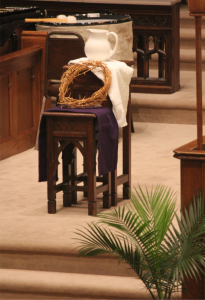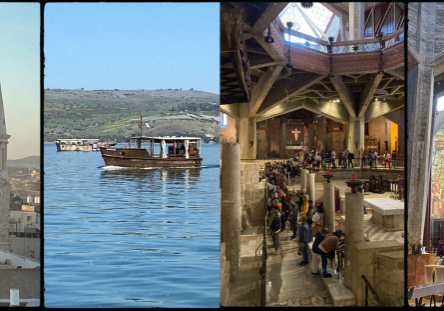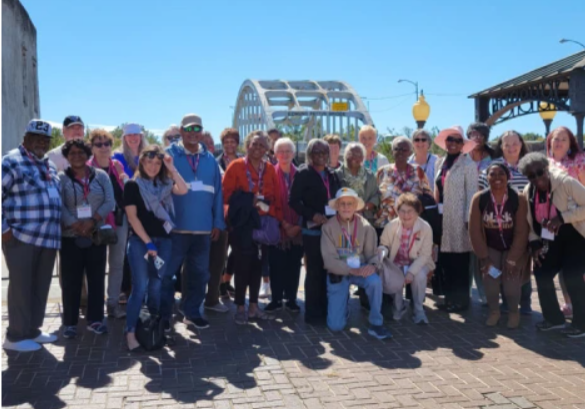The Traditions of Holy Week
 By Susan Shinn Turner
By Susan Shinn Turner
The observance of Holy Week — the re-enactment of events of Jesus’ last week on Earth — traces its roots to the 4th Century.
This year, Easter Sunday will be remarkably different, but we’ll still proclaim, “Christ is Risen, he is Risen indeed!”
Holy Week starts with triumph, moves to travesty, and ends in triumph, explains Rob Durocher. “Of all the feasts we have throughout the church year, this is the most poignant.”
There are some who want to move from “Hosanna!” to “Hallelujah!”, Rob says. But without Holy Week, you miss the mocking, the betrayal, the crucifixion itself. “We miss out on the passion. We miss out on those few days that were the most trying time in the life of Jesus and his disciples. Their lives were thrown into chaos.”
He adds, “People need to know how great God’s love was, personified in those final days of Jesus’ life. We can’t make assumptions that people today know about these events. In a bloody nutshell, Holy Week tells us.”
Holy Week at St. John’s begins with Palm Sunday, during which the Passion is read. During the Maundy Thursday service, attendees have had the opportunity to have their feet washed, just as Jesus washed the disciples’ feet during the night of the Last Supper. St. John’s families have played a role in the stripping of the altar, which is symbolic of how Jesus was stripped and beaten prior to his crucifixion.
A particularly dramatic moment is when a large black veil falls falls and covers the entire altar area. In the 1990s, Tim Freeze and Don Julian developed the idea and installed the veil.
It’s a dramatic moment, Rob says. “For me, that veil separates us from God.”
On Friday evening, the Good Friday Tenebrae service is held. The word “tenebrae” is Latin for darkness, and candles are extinguished during the readings of the seven last words of Jesus.
Pastor Carl Sachtleben developed the idea of a father and son carrying a large wooden cross down the aisle, hammering nails into it, then securing it loudly in a holder. Finally, every light is extinguished. Worshippers are then invited to leave nails at the foot of the cross as they exit in silence.
Finally, on Sunday morning comes the great proclamation, which echoes throughout Christendom: “Christ is Risen, He is Risen indeed! Hallelujah!”
“Even if we’re worshipping in a closet, Christ is still risen,” Rob says. “There is not an empty church that will ever change that. Quarantines can’t change that. It will be different this year, but we will celebrate with gusto, still drawn together as the body of Christ.”
Related Posts

Holy Land Pilgrimage



